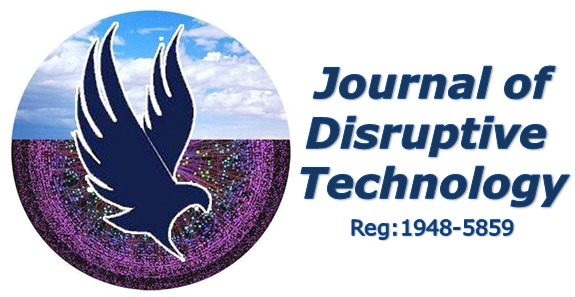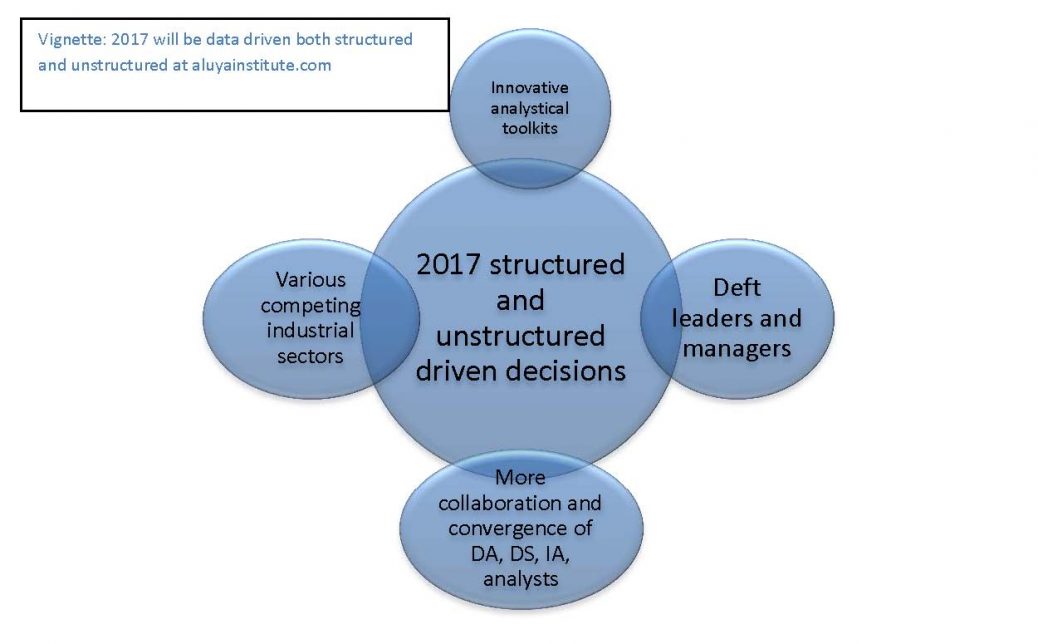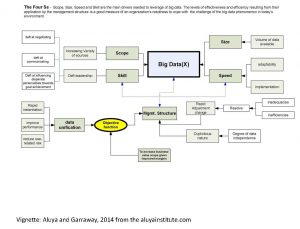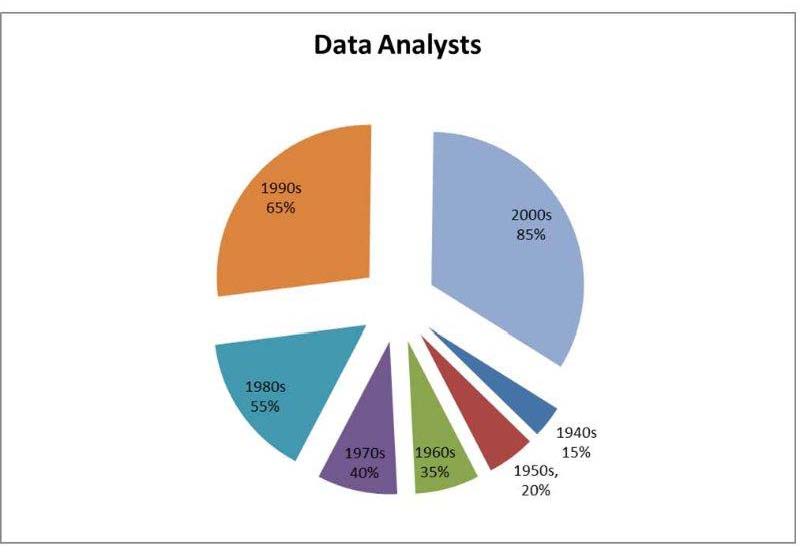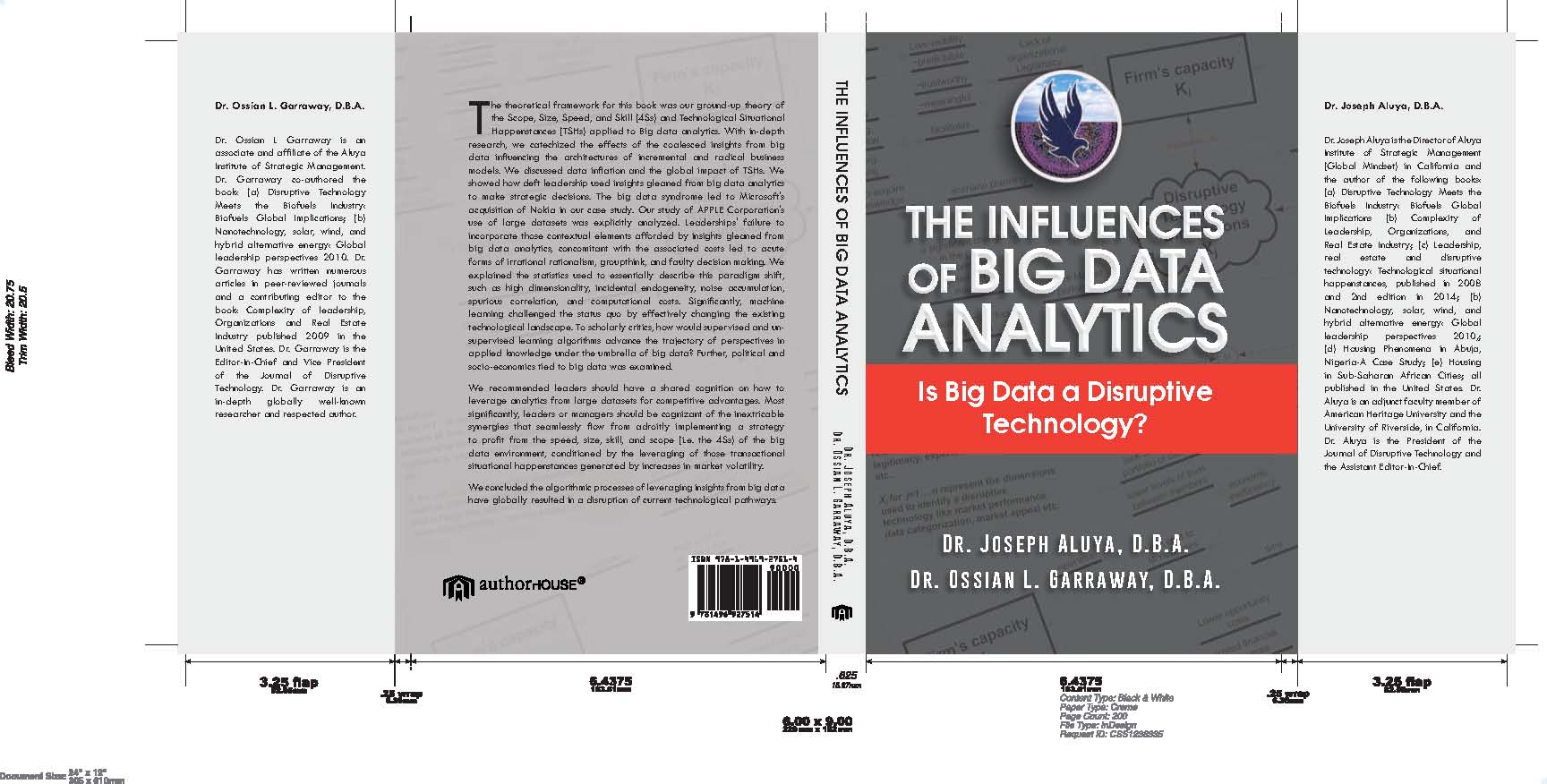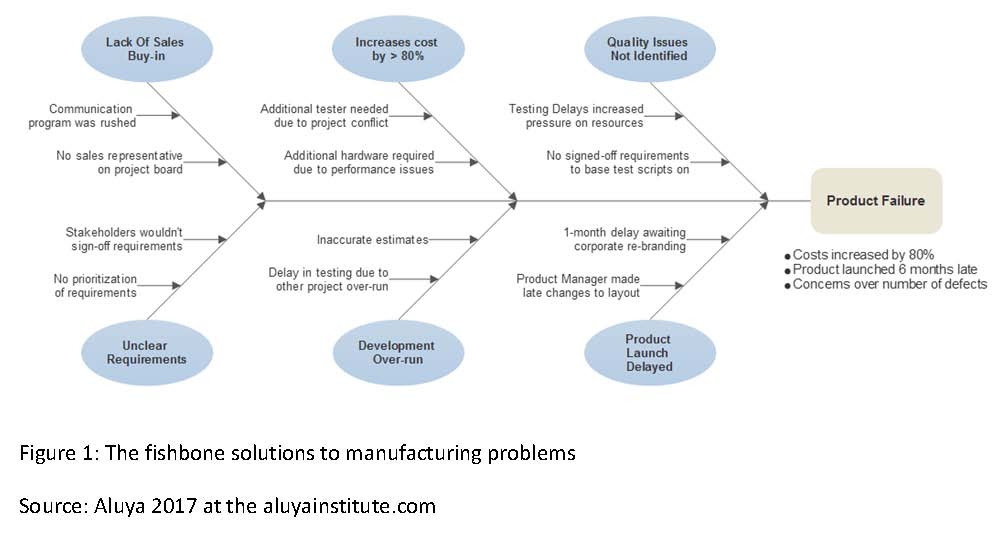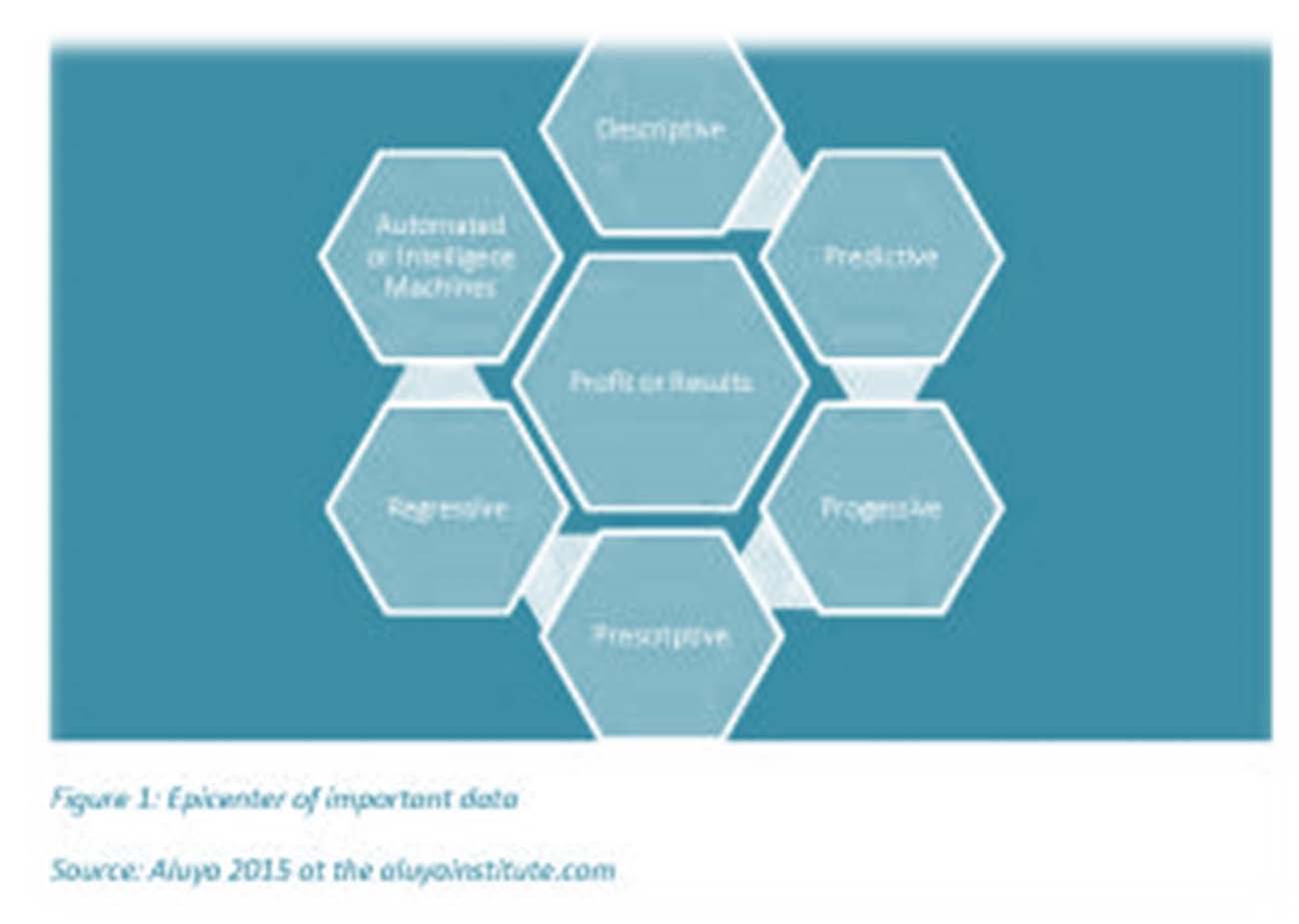Yes! 2016, 2017 and 2018 will be driven by actionable real time important data sets
In 2016, organizational culture, profit and systems were driven by analytics and real time data decisions. Expect the same or more from 2017 and 2018. Most significantly, there will be a cross proliferation and pollination of data driven decisions in the bio-tech, financial sector, health care industry and some based on human mutated machines or within the business intelligentsia. To help understand the global impact of these data driven decisions, the organic grand up conceptualization of the scope, size, speed, and skill (4Ss) with respect to the big data phenomenon will be revisited. The core questions that have been directed to my early write ups’ were the scholastic divergence philosophical interpretations of these data driven decisions like the “how, what, where and why’s”.
- Why have scope, size, speed, and skill (4Ss) been the leveraging drivers of gleaning important real time data from the insights of large datasets?
- How have the insights from gleaned data become the front and center as a disruptive technology to deft leadership and management?
- What have been the predictable pathways or benefits emanating from these voluminous data sets to businesses?
- Where have large datasets been as disruptive elements within the technology industry?
Synoptically, answers to these questions will be dissected from a scholastic prism based on exhaustive critical counter-suppositions within the various theoretical lenses. Various contra-posed or null hypothetical theories will be used to demonstrate the impact of big data driven decisions to businesses, organizations, institutions and quasi-governmental bodies in examining the gleaning of important data from large datasets as both as sustainable and disruptive force to the technology industry. For example, a variety of theories have been proposed to explain the displacement of large firms by smaller and newly created innovative challengers. Large firms’ rigidities, unresponsiveness to real-time driven data information, and bounded rationalities have put them at a disadvantage by placing limitations on their capacities to share cognition, shiftily recognize and respond to competitive threats (Christensen, 1997; Dougherty and Heller, 1994; Henderson and Clark, 1990). Despite the valuable insights provided by existing research, scholars have suggested this displacement required further exploration and examination (Adner, 2002).
In the studies of Apple, Amazon, IBM, Facebook, Google and Microsoft, the research questions were centered on the intrinsic value of big data and the predictable pathways or benefits of large data sets to businesses (see the case studies here at jofdt.com. Herein lie answers to the above questions that were effectively and cogently provided (Aluya, 2013, 2014). However, individualized clicks left on desktops have become the hallmark of the digital indelible mark of retraceable data that are amorphously streaming into organizations. These clicks have undoubtedly become disruptive to the cross-business sectors. Innovative applications to virtualization technology and cloud storage systems have resulted in disruptive technologies (Dumbill, 2012). Remarkably, contributing factors to the explosion of data have included cloud computing, and the disruptive propagation of big data analytics championed by technology giants like Microsoft, and upstarts like Cloudera, Domo and other similar companies. Contagiously, the market has shifted in their favor. The 4Ss have become the trajectory for understanding the nebulous meaning of big data as a framework for analyzing, contra-posing or juxtaposing various competing suppositions (below is the organic concept of 4Ss or read more here at jofdt.com ).
To elaborate, the big data phenomenon has incorporated the collecting, coalescing or gleaning of large data; the nature of which were complex, structured or unstructured, filtered or unfiltered, cyclical or recursive; and was used by deft leaders and managers to disrupt existing technologies. And of course in 2016, 2017, and 2018 disruption of the existing organizational systems will all be based on profit maximization. Effectively, big data could become either barriers or tough scalable pathways for new entrants in the technology industry; or could be used to disrupt the anchored traditional industrial benchmark or the culture. Alternatively, wrongly collected and analyzed so-called important data could also be useless and catatonically detrimental to the health of the organization. Enormous amounts of data have been streamed into storage systems through varying degrees of granularity or untraditional means (Weiner, 2012). The speed in which machines or toolkits have captured these datasets, and the interpretations and implementations has remained unprecedented in the annals of Information Technology. And in 2016, 2017, and 2018 the resultant effect to various industries will be the convergence of Information Technologists; Data scientists, Data Analysts and Information Managers. Most significantly, the data transparencies emanating from the collaboration of the aforementioned analysts could help deft leaders and managers make pertinent rational decisions that clarify strategic critical positions that are important to the organizations. Despite the complex, cyclical, recursive unstructured nature of the datasets, in 2016, 2017, and 2018 transparency and possibly privacy of the data will become central to the discourse within the enclave of technology scholars. At issue in 2016, will be the acceptable level of privacy necessary to protect critical business models of profitability. Examples of privacy issues have been the recent past encrypted release of National Security Agency’s data gathering technique through its cyber surveillance program called PRISM, rightly or wrongly exposed by Edward Snowden (Jacobsen, 2013); and data security breaches concerning personal credit cards stored in stores like Target, HomeDepot or Wal-Mart stores in the United States. Unfortunately, the leadership of Target stores compromised the security and privacy of its customers most recently by not adhering to security procedures. In 2016, 2017, and 2018 transparency and privacy of the stored data remained critical to the sustaining technologies.
With shared cognition, the leaders of Apple, Facebook, Google, Microsoft, Yahoo and many other technology companies within Silicon Valley not too long ago wrote and signed a single letter that queried the rationale of the National Security Agency (NSA) to compromise the privacy of business data allegedly gleaned through surveillance processes by the United States department of Justice. Jacobsen (2013) stated that within a 6-month period after the debacle of PRISM, 13000 requests were made by agitated customers on the issues of privacy. Issues of transparency in the data gathering process of diffused information have provided the stage for disruptive technologies (i.e #IoT and #IIoT), and have also built business confidence to enable an environment for prosperity and competitive vim. As in the case of Google, the company will continue to use Dremel in 2016 to analyze transparent marketing information in billions per second; and the instantaneous decisions reached will be used disruptively in comparison to the MapReduce technology. Some of the data processed in parallel were difficult to manage with the traditional toolkits; therefore, in 2016, 2017 and 2018, more newly innovative toolkits will disrupt the existing ones. As a result, new vistas will be open to create new inventions for the disruptive technology. Even though, predicting and forecasting future trends have remained the hallmark of big data, such emblems have enormously contributed to the disruptiveness of existing technologies. So, the issue in 2016, 2017, 2018 will not be whether big data disrupted the existing system, but how handlers, inventors, innovators, or analysts went about disrupting the status quo. Most significantly, in 2016, 2017 and 2018, big data will continue to be disruptive in the phase of new entrants into the market place while simultaneously competing with the existing anchored larger businesses or traditional institutions.
For academic exercise, quickly interjected here will be the origination or the popularization of big data. Mayer-Schonberger and Cukier (2012) purported that Oren Etzioni conceptualized or popularized the theory of big data. The practicality of big data came into existence when Oren Etzioni eventually predicted airfare tickets through the differences in price between the passengers next to him. Simply put, the epitome of the big data concept was to predict or forecast future trends and fluctuations within the enclave of huge datasets. By predicting fluctuations and forecasting future trends in 2016, 2017 and 2018, deft leaders and managers will be using big data to sublimely alter the technological landscape that will be resulting in the disruptiveness of the aforesaid various industrial benchmarks. These amorphous data were often exhausted through other byproducts. More often, the capacity of analysts capturing these data sets and turning them into actionable services will result in disrupting and altering of the existing systems (Gogia, 2013; Watters, 2012). Ominously, the traditional toolkits included in capturing, curating, searching, transferring or visualizing of these data sets will be outmoded in 2016 that the data sets will be practically impossible for the present analytic toolkits to scale and make useful predictions. The costs associated with analyzing the underlying data sets could become too expensive for businesses, and thus lead to the creation of more sophisticated innovative forms of analytics (Todd, 2012). In 2016, 2017and 2018, data sets will be everywhere, overflowing, overloading and disrupting the global marketing place, and will become obstreperous to the technology industry. Even bio-tech capsules and sensors to mimic human behaviors are in incubation under the silos of big data via the Internet of Things (#IoT) or the Industrial Internet of Things (#IIoT) and in 2016,2017 and 2018; this will eventually disrupt the entire technology pathways (Aluya and Garraway, 2014). For continuous reading and the references used in this study order the full article here at Jofdt.com
